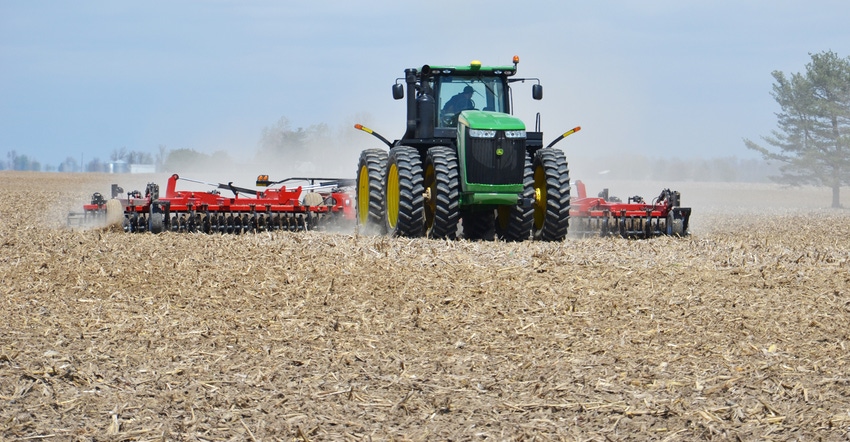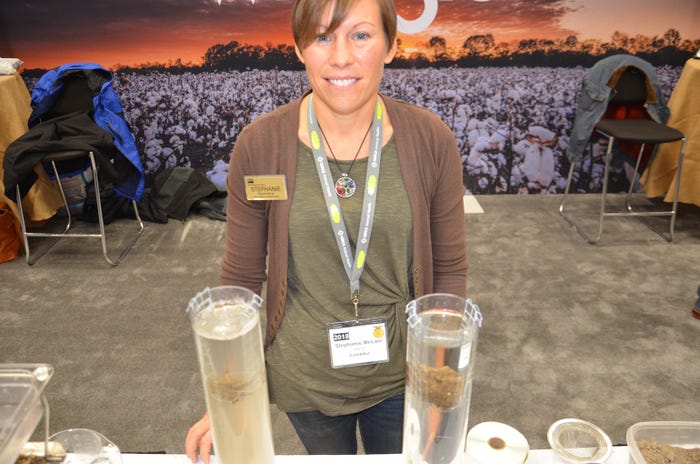
Stephanie McLain was glad for the chance to take her message about soil conservation to the National FFA Convention and Expo in Indianapolis recently. Some 67,000 people, most of them students wearing blue and gold jackets, registered for the event. All indications are that a vast number of them passed through the ever-popular expo show in the Indiana Convention Center.
McLain spent time helping staff a booth related to soil conservation. She stood behind a table with a simple demonstration sitting on it. If you’ve been to a no-till or conservation tillage field day, you’ve likely either seen this demonstration or one similar. McLain is a state soil conservation expert with the Natural Resources Conservation Service, based in the USDA NRCS state office in Indianapolis.
There were two tall, clear cylinders filled with water on the table in front of her. She hooked a wire basket over the edge of each. The basket in one cylinder contained soil from a conventionally tilled field. The basket in the other cylinder contained soil from a no-till field. But it wasn’t just any no-till field. McLain traveled to Hamilton County, Ind., to get a sample of soil from one of the fields of Rulon Farms. Roy, Ken, Rodney and Jerry Rulon both no-till and use cover crops to improve soil health in their operation. No-till and cover crops have been part of their standard operating procedure for growing crops for a long time.
Demonstrate and educate
“We wanted to show students coming by that there is a real difference in soils from these two different systems,” McLain says. If you want to implement change, start with those who are young, she believes. Several students in blue and gold jackets stopped by to see why there was a difference in what happened to the soil in the two different containers.
The soil from the conventionally tilled field had all but dissolved. It disappeared from sight and was on the bottom of the tube, McLain notes. “It dissolved within a few minutes of placing the sample in the wire basket.”
The sample in the other tube from the Rulons’ no-till and cover crop field was mostly still intact. Only a small amount of soil had left the larger aggregate and settled to the bottom of the tube.
 NOW YOU SEE IT … NOW YOU DON’T! Stephanie McLain says it doesn’t take very long for soil from a conventionally tilled field to disappear when placed in a tube of water. It dissolves and winds up on the bottom of the tube.
NOW YOU SEE IT … NOW YOU DON’T! Stephanie McLain says it doesn’t take very long for soil from a conventionally tilled field to disappear when placed in a tube of water. It dissolves and winds up on the bottom of the tube.

“The difference is due to the microbes which live in the healthier soil,” McLain explained to students. “They produce or exude materials which tend to be sticky, and they help soil particles stay together. That keeps the soil particles from dissolving, and instead holds them as part of the soil structure.”
She asked students to think of it as glue for the soil. The conventionally tilled soil didn’t have much, if any, glue, so the particles dissolved in the water and fell to the bottom. The soil from the no-till field stayed together, giving the soil structure.
“It’s a simple experiment, but it gets the point across,” she concludes.
About the Author(s)
You May Also Like




